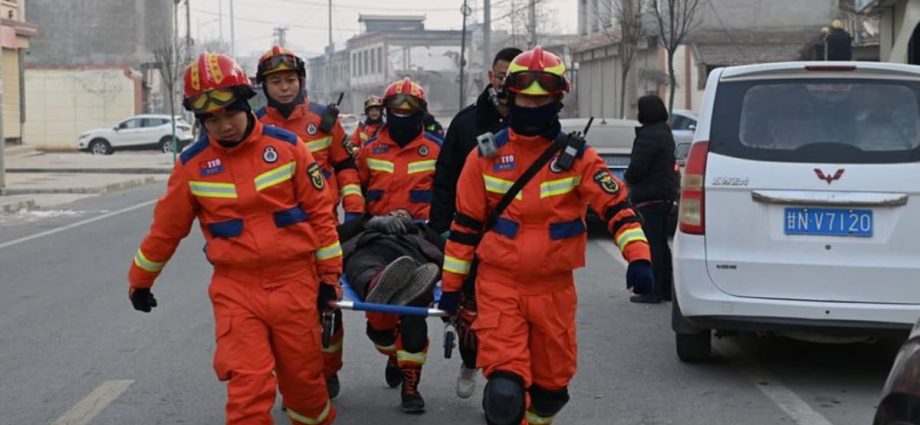
Earthquakes are common in provinces such as Gansu, lying on the northeastern boundary of the tectonically active Qinghai-Tibetan plateau. China’s deadliest quake in recent decades was in 2008 when a magnitude-8.0 temblor struck Sichuan, killing nearly 70,000 people.
The freezing cold would not be the only concern weighing on rescuers and working groups assessing the situation.
The Gansu Provincial Seismological Bureau said through comprehensive analysis, strong aftershocks of magnitude 5 were still possible around the area in the coming days, based on the characteristics of the Monday quake, historical seismic activity and other factors.
The aftershocks will be closely tracked to issue early warnings, official news agency Xinhua cited the bureau’s deputy director as saying.
By early Wednesday, there were two aftershocks of magnitude 4.0 and above, and eight magnitude 3.0 and above, China Earthquake Networks Center said.
The quake in Gansu’s Jishishan county was logged at a depth of 10km, which experts consider shallow. Earthquakes with shallow focal points can easily cause considerable damage to the ground, Xinhua reported citing a senior engineer with the China Seismological Network Center.
Rice, flour and oil supply in Gansu’s Jishishan were sufficient at stable market prices, state grain reserves and food processing institutions said, having organised warehouses to deliver emergency supplies to the quake-stricken area.
Within 50km of the epicentre on the side of neighbouring Qinghai province, the earthquake affected 22 towns and villages, but of that, two villages suffered the worst damage.
Qinghai’s Minhe county earlier recorded 20 missing people from two villages, where a mudslide swept through half-burying many buildings in brown silt. Search and rescue operations and efforts to resettle residents continued as state media footage showed bulldozers removing thick mud.

